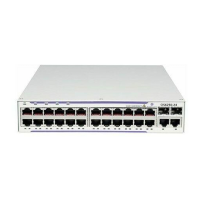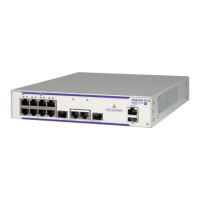System Management
7210 SAS D, E, K OS Basic System Configuration Guide Page 207
Performance Considerations
Although IEEE 1588v2 can be used on a network that is not PTP-aware, the use of PTP-aware
network elements (boundary clocks) within the packet switched network improves
synchronization performance by reducing the impact of PDV between the grand master clock and
the slave clock. In particular, when IEEE 1588v2 is used to distribute high accuracy time, such as
for mobile base station phase requirements, then the network architecture requires the deployment
of PTP awareness in every device between the Grandmaster and the mobile base station slave.
In addition, performance is also improved by the removal of any PDV caused by internal queuing
within the boundary clock or slave clock. This is accomplished with hardware that is capable of
detecting and time stamping the IEEE 1588v2 packets at the Ethernet interface. This capability is
referred to as port-based time stamping. 7210 SAS that are 1588v2 capable supports port-based
time stamping.
PTP Capabilities
PTP messages are supported through IPv4 unicast with a fixed IP header size. The tables below
describes the support message rates for slave and master states. The ordinary clock can be used in
only slave mode. The boundary clock can be in both of these states.
Table 27: Support Message Rates for Slave and Master Clock States
Support Message Slave Clock Master Clock
Request Rate (see
Note
*
)
*.Note: 64pps is not recommended for use. For more information, see on page 209.
Grant Rate (see Note*)
Min Max
Announce 1 packet every 2
seconds
1 packet every 2
seconds
1 packet every 2
seconds
Sync User configurable with
an option to configure
8/16 packets per second
8 packets/seconds 16 packets/seconds (see
Note*)
Delay_Resp User configurable with
an option to configure
8/16 packets per second
8 packets/seconds 16 packets/seconds (see
Note*)
Duration 300 seconds 1 second 1000 seconds

